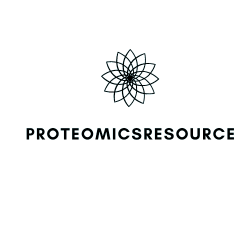Plant Preservative Mixture

Resume
Endophytic contaminants are a common problem for in vitro propagation of woody plants and have important economic implications for the conservation of plant genetic resources and commercial micropropagation. In this study, first, microbial contamination that appeared around the base of in vitro-grown apple shoots was identified as Bacillus megaterium. Then, the plant preservative mixture (PPM™) was used as a bactericidal agent in plant tissue culture. Its efficacy was tested to eradicate endophytic B. megaterium in the apple in vitro cultures. In vitro contaminated shoots were grown in tissue culture medium supplemented with 0.2% v/v PPM™ for 12 weeks and then transferred to medium without PPM™ and grown for 24 weeks.
This study demonstrated that PPMTM is an effective agent to control the growth of B. megaterium. Our results highlight the species-specific response of apple shoots to PPMTM. PPMTM was effective in the control of endogenous microbial contamination of ‘Golden Delicious’, ‘Landsberger Renette’, ‘Suislepper’ and ‘Aport krovavo-krasnyi’ apple varieties; meanwhile, in ‘KG 7’ and ‘Gold Rush’, all plants grown in the absence of PPMTM were still contaminated with bacteria, even though they were pretreated for 12 weeks in medium supplemented with PPMTM. Therefore, these results suggest the need for further testing of PPMTM prolonged incubation in these cultivars that had outbreaks of bacterial contamination.
Keywords: Bacillus megaterium; biocide; malus; microbial contamination; plant tissue culture; PPM™
Materials and Methods
- Plant material and growing conditions
In vitro contaminated shoots of Malus sieversii (Ledeb.) M. Roem., ‘KG 7’, Malus domestica Borkh. ‘Aport krovavo-krasnyi’, ‘Golden Delicious’, ‘Gold Rush’, ‘Landsberger Renette’ and ‘Suislepper’ were originally obtained from the Institute of Plant Biology and Biotechnology (Almaty, Kazakhstan) and used as study objects. In vitro seedlings were maintained and subcultured every 4 to 6 weeks in glass culture vessels (237 mL) (PhytoTechnology Laboratories®, Lenexa, KS, USA) with MS basal medium containing 30 g L-1 sucrose. , 2.2 μM N6-benzylaminopurine ), 0.04 μM indole-3-butyric acid (IBA), 1.75 g L-1 Gelrite™ (PhytoTechnology Laboratories®, Lenexa, KS, USA) and 4 g L-1 agar (PhytoTechnology Laboratories®, Lenexa, KS, USA). The pH of the medium was adjusted to 5.7 using NaOH or HCl before autoclaving at 121 °C for 20 min. All chemicals were supplied by SPF Midland (Almaty, Kazakhstan) unless otherwise specified. Cultures were grown at 24 ± 1 °C under a 16-h light photoperiod with a light intensity of 40 µM m−2 s−1 with two types of OPPLE tubular fluorescent lamps: YK 21RR 16/G 21W 6500K RGB and YK 21RL 16 /G 21W 4000K RGB, supplied by ElectroComplex in Corporation (Almaty, Kazakhstan).
- Isolation, culture and identification of endophytic bacteria from plants in vitro
Shoots were isolated from six-week-old cultures and used for the isolation of bacterial contaminants. Initially, apparent bacterial contamination was detected visually, collected, and aseptically plated into Petri dishes (100 mm × 15 mm) containing 523 Bacteriological Growth Medium, a general medium for bacterial growth consisting of 8 g L-1 casein hydrolyzate (Sigma-Aldrich, St. Louis, MO, USA), 10 g L−1 sucrose, 4 g L−1 yeast extract, 2 g L−1 monopotassium phosphate (KH2PO4), 0.15 g L−1 magnesium sulfate (MgSO4 · 7H2O) and 6 g L−1 Gelrite™ at pH 6.9. The plates were incubated at room temperature. After 48 h of incubation, the developed colonies were purified by repeating the isolation. Solitary colonies of contamination were collected using swabs and then dipped into a tube containing Amies’ medium. To obtain a pure culture, all samples were grown in an esculin-gelatin medium with incubated at 37 °C for 48 h under anaerobic conditions. Subsequently, the isolates were identified by MALDI-TOF/MS (Bruker Daltonik GmbH, Bremen, Germany), as described by Kozhakhmetova et al. MALDI-TOF/MS scores of ≥1.7 were accepted for species assignment, and scores below 1.7 were considered unreliable. Further micropropagation experiments with indexed shoots were carried out.
- Evaluation of the Impact of PPMTM on the Multiplication of Sprouts
The multiplication rate (MR) was calculated on shoots grown for 12 weeks (two passages of 6 weeks each) in basal MS medium with 0.2% v/v PPMTM and control without PPMTM. Data were recorded during subcultures. The MR was determined by the formula: MR = a/bc, where a is the number of new shoots, b is the number of initial shoots, and c is the number of subcultures.
- Statistic analysis
Each experiment was carried out with two repetitions of eight shoots in each treatment, and the entire experiment was repeated twice. Data were expressed as mean values ± standard error (SE). Less significant differences were calculated by one-way ANOVA and Tukey’s separation of means test (p ≤ 0.05) using the SYSTAT 12.0 software package.
Conclusions
Although endophytic bacteria remain a continuing threat to plant tissue culture, techniques are available to control and, in some cases, eliminate contamination. In this study, the application of the recommended concentration of PPMTM (0.2% v/v) for 12 weeks of culture was shown to be effective in controlling the growth of B. megaterium in apple tissue cultures. Our results highlight the cultivar-specific response of apple sprouts to PPMTM. Therefore, these results suggest the need for further testing of PPMTM prolonged incubation in these cultivars that had outbreaks of bacterial contamination. It also provides scope for extending the application of PPMTM to other types of plants and endogenous contaminants.
